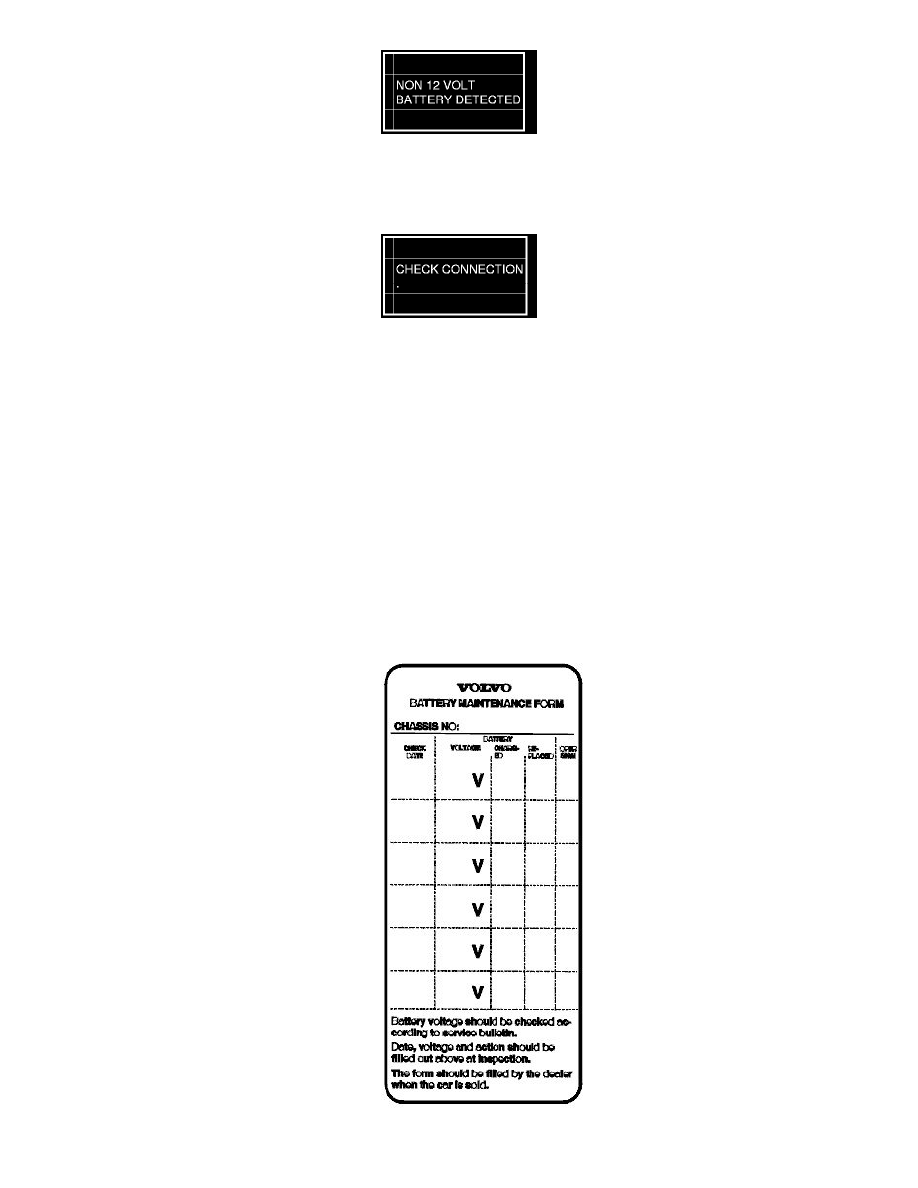V40 L4-1.9L Turbo VIN 29 B4204T3 (2002)

Message to check the connections
If a good connection to the battery is not obtained, the following message will be displayed. If this is the case, check the connections by working the
cable terminals on the test tool forwards and backwards.
Alternative test method
Note! This method does not apply to North American dealers.North American dealers must always follow the Volvo Battery Analyzer
3100/3200 test method.
Follow the steps below:
1. Checking the density of the acid
The density of the acid can be measured using an electrolyte gauge or a refractometer on the battery at room temperature.
Measure the density in all the cells. Check the following:
-
If the density is above 1.225 g/cm3 in each cell and the difference in density between the cells is less than 0.03 g/cm3, the battery must be tested
for load. See point 4 below, Load check
-
If the density is below 1.225 g/cm3 in each cell and the difference in density between the cells is less than 0.03 g/cm3, the battery must be charged.
See Battery, charging See: Service and Repair/Procedures/Battery, Charging
-
If the density in two adjacent cells is considerably lower than in other cell (i.e. if the difference is greater than 0.03 g/cm3, there is probably
leakage between the two cells. Discard the battery
-
If the density is markedly lower in only one cell, the fault is probably a short-circuit. Check the battery acid for discoloration. Discard the battery.
2. Checking the stand-by voltage
